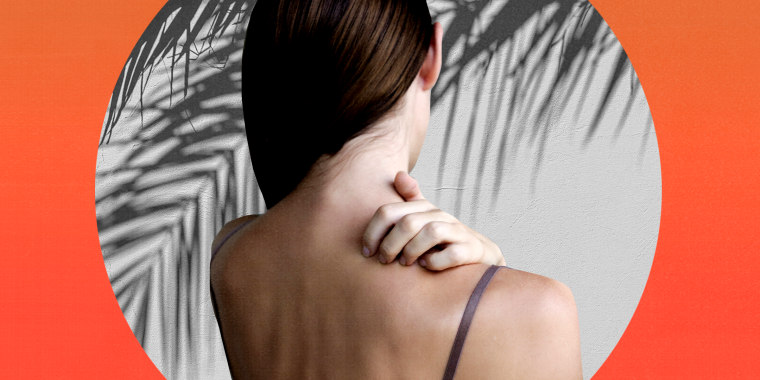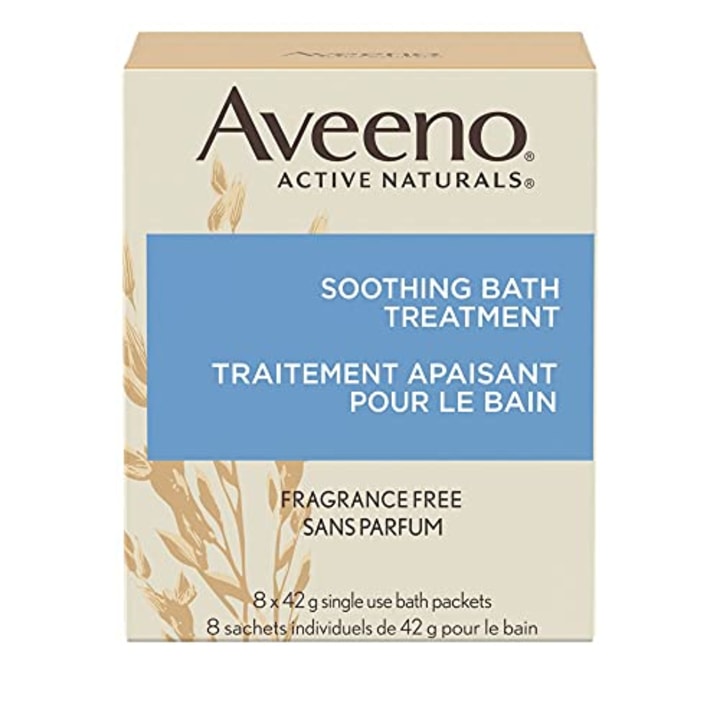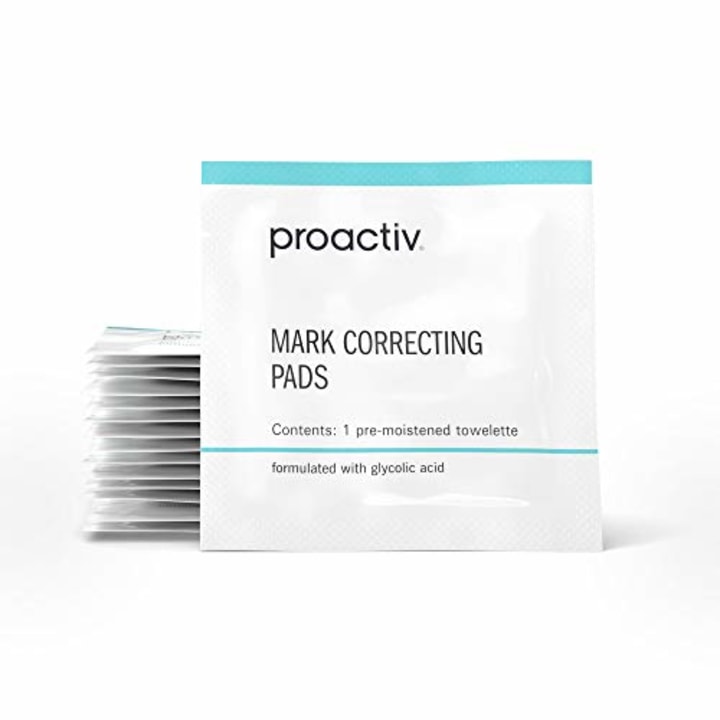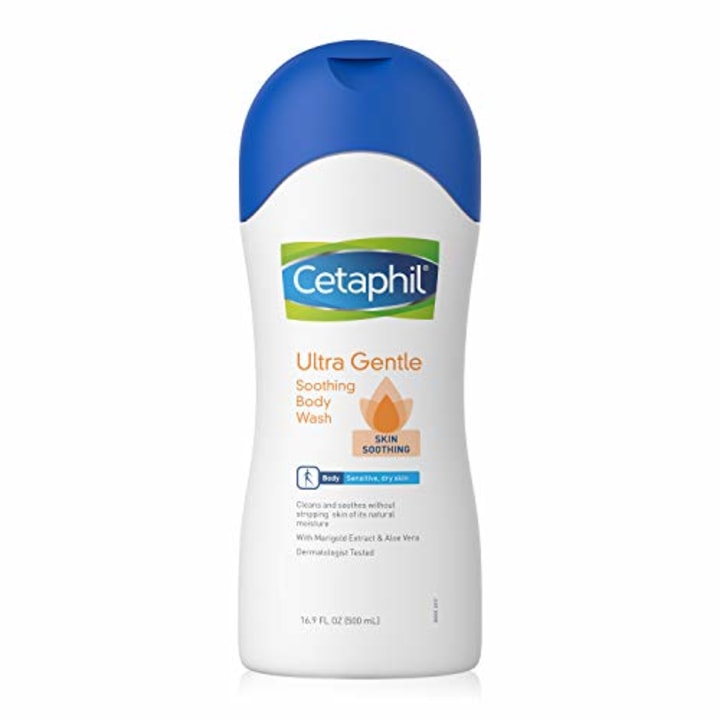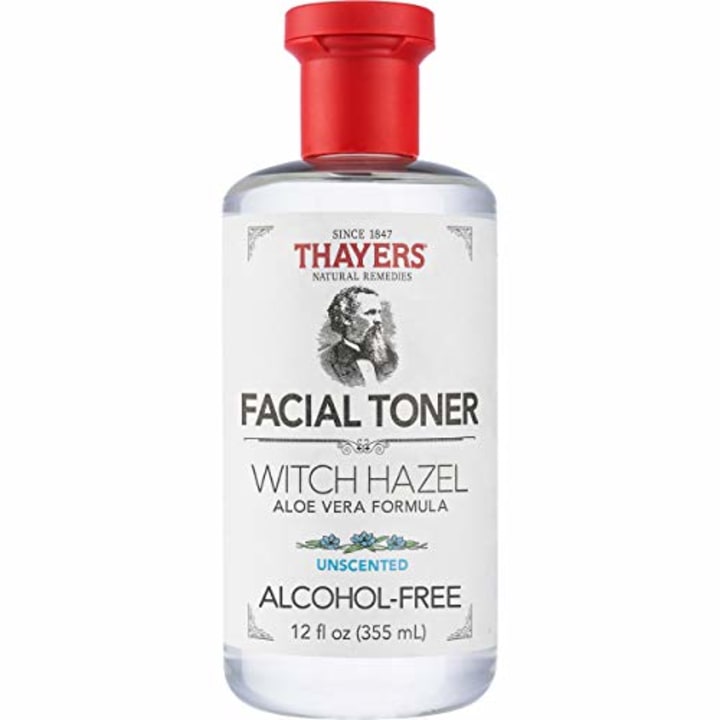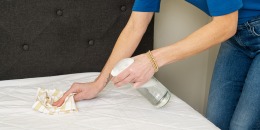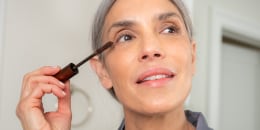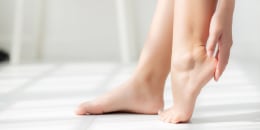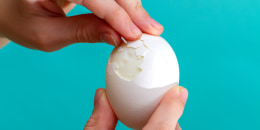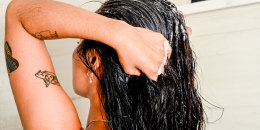Summertime and the living is easy, right? Well, not so much for your skin.
Between the harsh summer heat, pesky sweat and frequent shaving, your skin actually takes quite the beating this time of year.
Summer skin problems like heat rash, bacne and razor burn can drive you up a wall and make your skin crawl — err, itch — so TODAY consulted the experts to learn how to prevent (and treat) some of summer's most annoying skin issues. With their help, your skin will be living its most beautiful summer yet!
What causes summer skin problems?
We all know winter can be harsh on skin, what with its bone-chilling temps and whipping winds, but bright and sunny summer has its own set of elements that aren’t so skin-friendly.
“Simply put, it’s the combination of heat and moisture. The increase in temperature causes our bodies to naturally sweat, and when sweat sits on the surface of the skin, it mixes with our skin’s natural oils (sebum). This combination can trap bacteria on the skin, causing our pores to clog,” said BABOR educator Andrea Arni.
In other words, warm, moist environments encourage bacteria growth, which can translate into number of summer skin problems.
“Combine all that with any amount of dirt, makeup or sunscreen and you’ve got an inflamed and infected pore,” Arni said.
The good news? There's plenty you can do to avoid and treat summer skin issues like razor burn, heat rash and bacne!
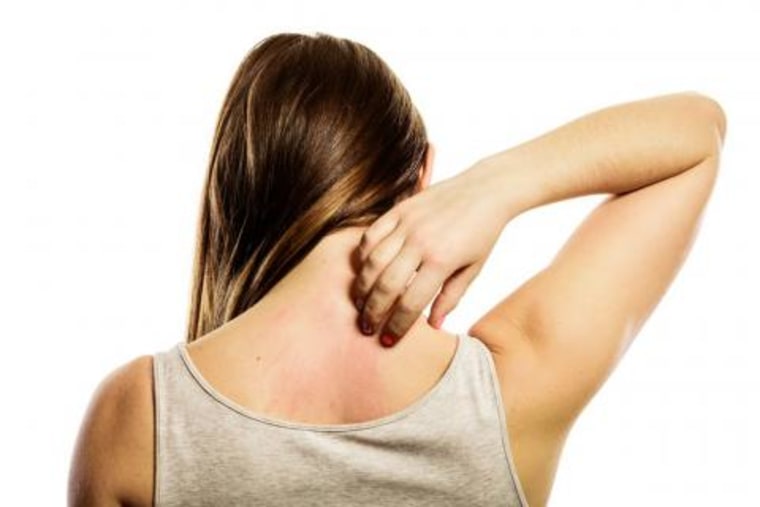
Heat rash
Ugh, heat rash! There’s nothing worse than a fun-filled day in the sun that results in red, inflamed skin. If you’ve had enough with this annoying summer skin issue, the first step is figuring out why heat rash happens in the first place.
“Heat rash is the result of heat, sweat, moisture and friction all coming together to inflame and irritate various areas of the body — ask anyone who has worn a wet bathing suit too long,” said Nandi Wagner, lead esthetician at Bliss Soho.
When you work out in the summer, you tend to sweat more and hot days in general can also trigger your body to produce excess sweat. All that extra sweat — if left alone — can create an unpleasant skin reaction.
“Miliaria, commonly known as heat rash, happens when we sweat and tiny sweat glands get covered by layers of skin,” said Dr. Gary Goldfaden, founder of Goldfaden MD products.
Sounds lovely, right? Heat rash can look different from person to person, but typically presents itself as red patches, bumps or blisters that are itchy (or prickly). The inner thighs, rib cage and underarms are pretty prone to heat rash during the summer, but many people also experience the pesky red patches around the waist, on the inner arms, behind the knees or under the breasts.
Want to arm your skin against annoying heat rashes this summer? Take these preventative measures:
- Jump in a cool shower and rinse off immediately post-workout to minimize sweat.
- Opt for loose-fitting clothing made from breathable fabrics (like cotton) and keep your skin cool with the help of fans and air conditioning.
- Keep trouble areas (like inner thighs) safe from heat rash with products that prevent chafing and irritation.
- Change out of wet clothes and swimwear as soon as possible.
If it’s too late and you’ve already got a heat rash, there’s plenty you can do at home to calm it down.
“This condition typically resolves quickly with cooling of the skin and avoidance of heat,” said Dr. Bobby Y. Reddy, an instructor in dermatology at Harvard Medical School and Massachusetts General Hospital. “However, if persistent, progressive or any signs of infection present, one should seek evaluation by a healthcare professional.”
Before pressing the panic button, try the following treatments to soothe your heat rash:
- Treat skin with a salicylic acid-based wash.
- Take a bath with colloidal oatmeal and a light dusting of talcum powder.
- Apply a cold compress to skin.
- Try to refrain from scratching or irritating a heat rash — it’ll help prevent infection!
- Apply a low-potency hydrocortisone cream for a few days to reduce irritation. soothe and heal skin.
Aveeno Soothing Bath Treatment

Body acne
Just when you thought you’d mastered facial acne, along comes a crop of body acne breakouts (aka bacne) to celebrate summer’s arrival. Honestly, it’s almost as though the pesky pimples know you want to show off a bit more skin this time of year!
So what in the world could possess your body skin to start breaking out? Well, much like facial acne, bacne happens when oil mixes with dead skin cells (and sometimes bacteria) and clog your pores.
“Sweat-induced bacteria growth is the usual cause of bacne in the summer. Just like heat rash, wearing wet or sweaty clothing for too long can aggravate body breakouts, so always change as soon as you can after a workout or trip to the pool,” Wagner said.
Sweat certainly causes its fair share of bacne, but the pesky body breakouts can also result from steroid use or the application of body products/laundry detergents that are too heavy for the skin.
Bacne can wreak havoc on the chest, neck and butt, but one of its biggest targets is the back. And it turns out that some of your favorite summer style staples aren’t doing your skin any favors.
“Because the back has a high density of sweat and oil glands, and is generally covered with clothing, it’s prone to heat-trapping, occlusion and pressure/rubbing from clothes/backpacks — all which increase the chances of acne formation,” said Dr. Rachel Nazarian, FAAD, of the Mount Sinai Department of Dermatology.
Want to prevent your chances of an annoying bacne breakout? Try the following preventative measures:
- Can’t make it to the shower after a workout? Carry some salicylic acid wipes with you to clean up in a jiffy!
- Remove damp clothing as soon as possible after exercising.
- Try an acne-fighting body wash to treat acne all over. "Those containing salicylic acid are ideal products for people with body or back acne. Salicylic acid gently exfoliates surface skin cells and cleans bacteria from the skin surface," said Nazarian.
- Regular exfoliation can also ward off bacne. "When choosing a scrub, look for one that contains exfoliation beads or crystals and enzymes such as pumpkin or papaya, as these will help disintegrate dead skin cells," Goldfaden said.
- Use an oil-free (non-comedogenic) sunscreen on the back.
Proactiv Mark Correcting Glycolic Acid Pads
Already dealing with bacne? Fight it off with the following treatments:
- Washing the area twice daily and applying a topical antibacterial product can help treat and prevent future breakouts from occurring.
- "Treat withbenzoyl peroxide wash (be aware that it can bleach clothing so use at night and wear a white T-shirt), salicylic acid washes and exfoliants, along with topical retinoids like Adapalene," said Dr. Maral Skelsey, director of The Dermatologic Surgery Center of Washington and clinical associate professor of dermatology at Georgetown University.
- "For those with sensitive skin, using products like Cetaphil’s Fragrance-Free Ultra Gentle Body Wash is gentle enough that it won’t exacerbate any inflammatory skin conditions like bacne," said Dr. Yoon-Soo Cindy Bae, M.D., clinical assistant professor at NYU Dermatology.
Cetaphil Fragrance Free Ultra Gentle Body Wash
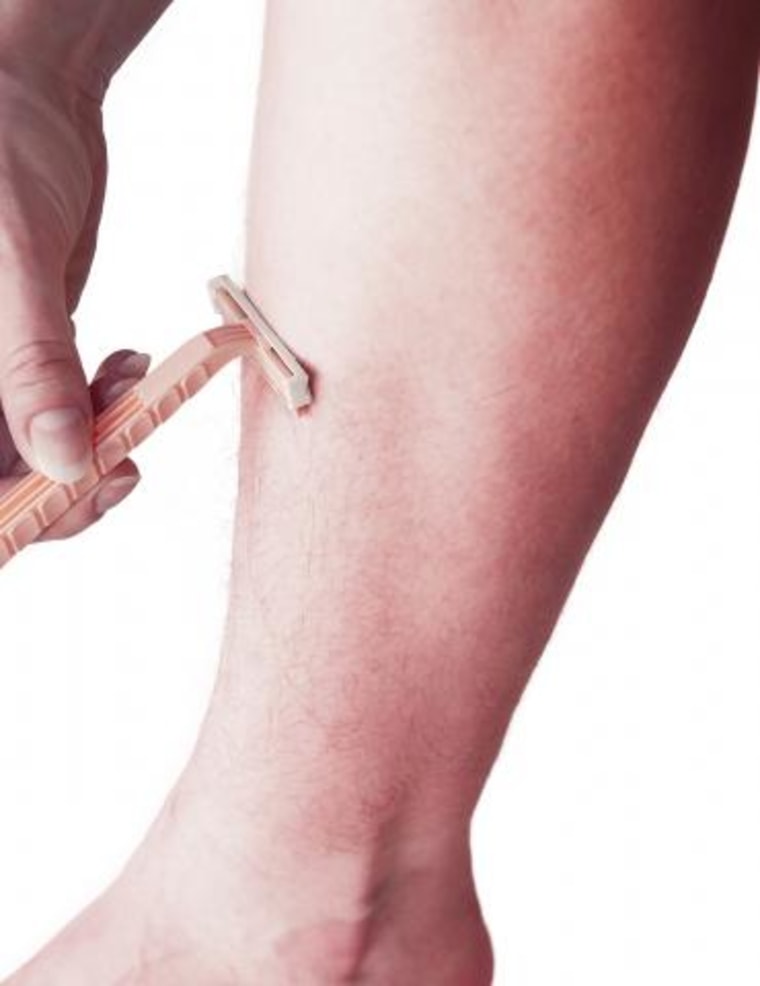
Razor burn
Shaving your legs is annoying enough without worrying about razor burn. And let’s face it: Itchy, red irritated skin isn’t exactly the cutest accessory to all your summer shorts and skirts. So what causes razor burn ... aside from, you know, shaving at lightning speed when you’re in a rush?
“Razor burn is caused by irritation of skin and inflammation around the hair follicle, typically from improper shaving technique. The wrong shaving cream or the wrong shaver can break the delicate skin tissue,” Nazarian said.
Much like your facial skin, the skin on your legs can be pretty sensitive, so using the right shaving tools is key to nipping razor burn in the bud.
“Preventing razor burn starts with a clean, fresh, sharp razor. A dull razor can tug at the hair follicles as it shaves, causing far more irritation than just friction alone,” Wagner said.
Of course, razor preferences vary from person to person — some of us love moisture bars, and some of us hate them, for instance — but we can all get behind the idea of proper shaving technique.
"I always recommend that my patients shave with the grain of hair, not against it. Hair grows in a particular direction and shaving against the grain can cause ingrown hairs, redness, inflammation and razor burn," Goldfaden said.
Make sure your skin has a barrier between it and your razor to also help prevent irritation.
"The best way to prevent razor burn is to use a lubricant-like shaving cream or soap and water when shaving," Skelsey said.
Need to treat your razor burn, stat? Try these remedies:
- Try a colloidal oatmeal bath and/or some witch hazel to sooth a razor burn.
- Don't count out hydrocortisone! "Apply a thin layer of hydrocortisone and a topical antibiotic cream twice a day for three days," Nazarian said.
- "The best way to treat razor burn is to temporarily stop shaving until the red bumps have healed. Topical medicine can be used (like low potency topical steroids) to help with the inflammation as well as some acne medicines," Bae said.
Thayers Alcohol-Free Unscented Witch Hazel Facial Toner
And you can always prevent razor burn in the following ways:
- Shave in the direction that hair grows and avoid shaving too often.
- Shave at the end of your shower when skin has absorbed enough water and is at its softest.
- Exfoliate often (2-3 times a week max) to keep pores clear.
- Make sure you moisturize skin after shaving! Doing so can help prevent bumps.
- Some after shaves can be drying (due to alcohol content) and aggravate skin, so look for a soothing serum to apply post-shaving instead.
Related:
